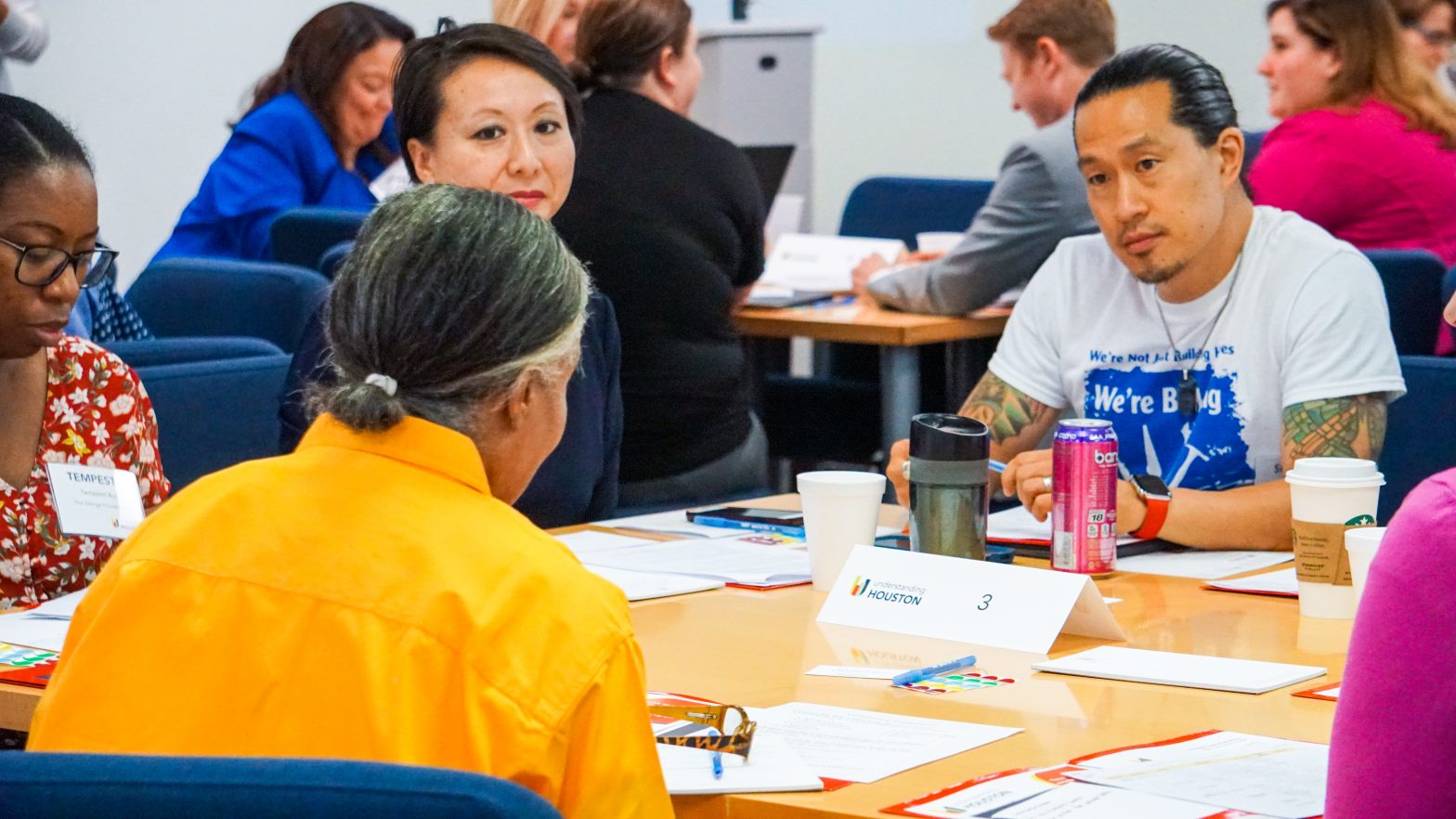On May 4, 2021, Understanding Houston held its second Data Dive + Workshop (DDW) with United Way of Greater Houston on Vulnerabilities to and Impacts of Disasters. The second session in our three-part series brought together nonprofit organizations to examine the disaster data through interactive and engaging discussion.
We started off with a review of the 4 takeaways from our first Data Dive + Workshop. For those who missed it, the first session covered key findings from the new subtopic on the various disaster risks to the region and COVID-19 data. You can find a recording of the event here, a copy of the presentation here and the Jamboard here.
After that, we dove into the vulnerability to and impacts from disaster subtopic and reviewed data from 211 Texas/United Way Helpline two weeks and four weeks after four recent disasters.
- Houstonians across communities and neighborhoods are vulnerable to shocks caused by disasters:
The extent to which natural disasters affect households depends largely on their situation before disaster strikes, and the Centers for Disease Control and Prevention’s (CDC) Social Vulnerability Index (SVI) is one of the most common ways to measure that level of vulnerability on a scale from 0 (lowest vulnerability) to 1 (highest vulnerability).
The SVI comprises 15 demographic characteristics and social factors across four themes: socioeconomic status, household composition and disability, non-white status and language, and housing and transportation. Disaster Data Dive + Workshop participants identified the practical ways in which social vulnerability plays out in our community and neighborhoods by SVI theme.
- Socioeconomic status
- Community members are taking longer to recover from back-to-back disasters.
- More issues are exacerbated and compounded, with many people still trying to regain their employment.
- Household composition and disability
- Lack of resources for older adults and youth in some communities such as Settegast.
- Minority Status & Language
- Limited English proficiency can limit ability to complete applications for assistance.
- Dissemination of information is challenged when community members have language barriers.
- Housing and transportation
- In some neighborhoods, homes are still affected by both Harvey and the utility outage from the Winter Freeze which increases their vulnerability to following disasters.
- Transportation outside of typical work hours (M-F, 9 a.m. – 5 p.m.) is limited, especially for outlying counties like Fort Bend and Montgomery.
- Financial impacts are the most pressing in our community and neighborhoods:
Through a dotmocracy voting exercise, participants identified financial impacts as the most pressing threat in their community and neighborhoods after a disaster. The DDW session highlighted how disaster assistance claims to FEMA vary across counties. The data show that the approval rate in the three-county area rarely rose above 50% for most disasters occurring since 2005. In seven of the last nine disasters, renters are less likely to be approved than homeowners. In Harris County, approval rates for both homeowners and renters are lower compared to Fort Bend or Montgomery counties.
- Leverage data to prepare and plan for next disaster response:
The participants identified the need to invest in preparedness and planning efforts as well as prioritize disaster capacity building in non-crisis times. That was also a common theme from what we heard in the first DDW.
- Use data to assist with investing in infrastructure in areas where we know there is potential for greater impact.
- Use data to determine if there are enough resources and service providers to respond to a disaster and meet needs when they arise.
- Pre-identify relevant organizations, their target populations and their strengths.
- Use data to learn from the past disasters.
- Establish a process to capture lessons learned from previous disasters and outstanding issues to address (i.e., try to reduce future severity through personal and community resilience and public/private sector responsibility).
Next Steps
You can find a recording of the second session here, a copy of the presentation here, and the Google slides here.
We hope you will join us for our last session as we collectively work toward building a more resilient and equitable region!
Future Nonprofit Disaster Data Dive + Workshop:
- Response to and Recovery from Disasters – June 8, 2021 from 9 a.m. to 10:30 a.m. Register here.
How have you used the data from Understanding Houston? Share your story with us!
